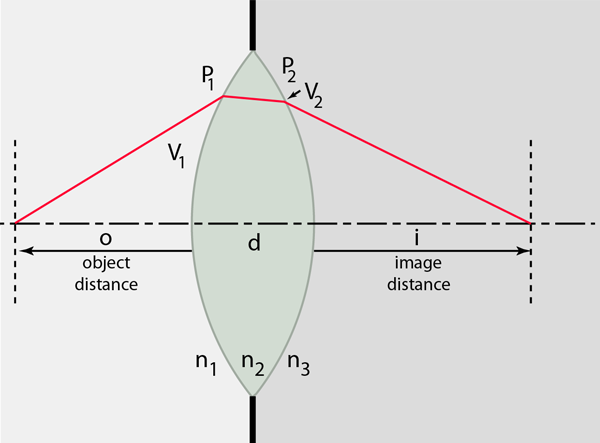Lens in Different Media
Tracing the vergence is a convenient way to locate the image formed by a thick lens in media of different indices of refraction. The Cartesian sign convention is used.

Thick lenses can be analyzed in terms of vergence. The vergence can be traced by noting its change at each surface.
For this case of a thick lens in different media, the system can be characterized by its radii of curvature, its indices of refraction, and its thickness.
A set of default parameters has been set up so that when you enter a value for one of the parameters, those default values will be assigned to the other parameters and the calculation will proceed with those values. Any of the physical parameters can be changed and the change of any entry will initiate the program operation again.
Recommendation: Enter the value nlens = 1.5 and lens thickness d=1 cm to be consistent with the default set of physical parameters. The calculation will fill in the default physical parameters and calculate the resultant values. Any of the physical parameters can then be changed and the change of any entry will initiate the program operation again.
Note that the calculation does not take into account the change in lens thickness with the angle of the incoming ray. It is typical to do the calculation only for the paraxial rays where the departure from full thickness is negligible. That is why the full thickness d is used in the calculations above. The exaggerated vertical scale of the lens drawing is hopefully helpful visually, but the calculations are not valid except for very small angles for the light paths.
| Vergence Example |
Lens concepts
Thick lens concepts
Meyer-Arendt
Ch 1.1
| HyperPhysics***** Light and Vision | R Nave |